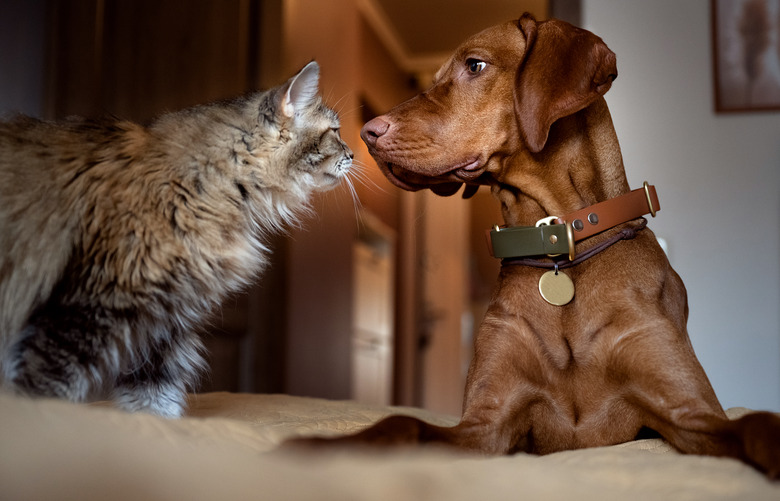What Are The Differences Between A Doberman And A Rottweiler?
The Doberman and the Rottweiler are both large breeds originating from Germany and are members of the American Kennel Club's working group. While some dogs may have similar coloring, there are many differences in appearance and personality between the two breeds.
Doberman vs. Rottweiler history
Doberman vs. Rottweiler history
Originating in Germany, the Rottweiler, or Rottie, is a descendant of Roman mastiffs. Originally used to drive cattle, the Rottweiler has since taken on new jobs, including working as guard dogs, police dogs, search-and-rescue dogs, and guide dogs for the blind.
The Doberman pinscher was developed in the 19th century to protect the owner as he went around town to collect taxes. This gave the dog the nickname "tax collector's dog." They have also worked a number of other jobs, including as police and military K-9s, search-and-rescue dogs, and therapy and support dogs.
Rottweiler vs. Doberman appearance
Rottweiler vs. Doberman appearance
Rottweilers are large dogs, with males growing 24 to 27 inches tall and weighing 95 to 135 pounds. Females are a bit smaller, growing 22 to 25 inches tall and weighing 80 to 100 pounds. They are stockier than the Doberman. Dobermans tend to be a bit taller than Rottweilers, but they are not as heavy. They are athletic dogs with a compact and muscular build. A male Doberman grows 26 to 28 inches and weighs 75 to 100 pounds, while a female grows 24 to 26 inches and weighs 60 to 90 pounds.
Rottweillers have a short black coat and rust markings. Dobermans have a short coat that is sleeker than a Rottweiler. Dobermans may be black with rust markings, similar to the Rottweiler, but they also come in other colors including blue, red, or fawn. Rottweilers have floppy ears and a shorter muzzle, while Dobermans have erect ears and a longer, more pointed muzzle.
Rottweiler vs. Doberman temperament
Rottweiler vs. Doberman temperament
Breed is not a reliable indicator of temperament, but there are some common traits you can expect in most dogs. While the Doberman and Rottweiler are both described as loyal, the Rottweiler is also thought of as loving and a confident guardian. They are vigilant and protective. Although they tend to be aloof around strangers, they can be quite playful around family. Rotties are eager to please and intelligent, but they can be stubborn, so it is important to use positive reinforcement training methods.
They have a medium energy level but a high need for mental stimulation. Daily activity is important, but Rotties will be even happier with a job to do. Consider canine sports, like obedience or tracking, or teach him to pull a cart.
The Doberman is described as alert and fearless. They are affectionate with family and may be better with young children than the Rottie. They are also protective and playful but tend to have a higher energy level than Rotties. Make sure they get plenty of exercise and playtime. Dobermans also do well in canine sports. They are intelligent dogs whom you can train quickly, but without proper training and socialization, they can also be pushy and difficult to manage as they grow up.
Common health conditions
Common health conditions
Responsible breeders will screen for health conditions common in the breed, which helps to keep dogs as healthy as possible. However, there are some conditions that each breed is more likely to inherit. Rottweillers may develop cancer, eye diseases, hip dysplasia, and heart conditions. They have an expected life span of nine to 10 years.
There are several hereditary conditions that may affect Dobermans. These include albinism, dilated cardiomyopathy, hip dysplasia, hypothyroidism, progressive retinal atrophy, and von Willebrand's disease. The life expectancy of the breed is 10 to 12 years.
